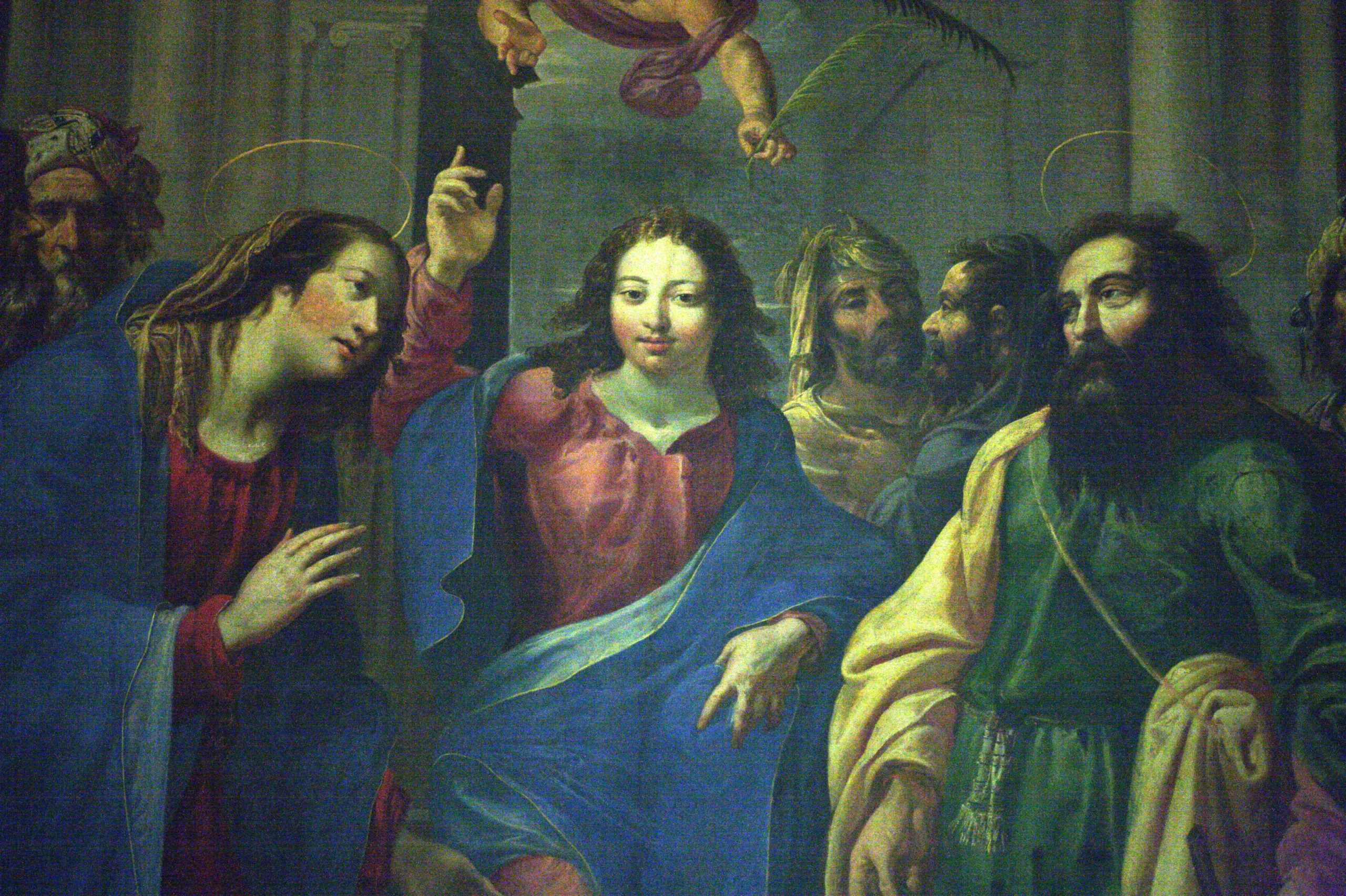For centuries, the question of whether or not Jesus had children has mystified scholars, theologians and the general public alike. Claims made by certain religious doctrines and a myriad of conspiracy theories alike suggest that there is more to this story than meets the eye. In this article we attempt to answer this age-old mystery by examining the claims made in various historical texts, The Da Vinci Code, links to characters like Mary Magdalene and theories that even suggest Jesus may have had a bloodline. Join us as we delve into the fascinating world of Christology and peel back the layers of this captivating theory.
The Gnostic Gospels and Its Claims

The Gnostic Gospels and Its Claims
The Gnostic Gospels are a collection of texts that were discovered in Egypt in 1945, including the Gospel of Thomas and the Gospel of Philip. These texts have been the subject of much speculation and controversy, especially with regards to the possibility that Jesus had a secret family.

One of the claims made by the Gnostic Gospels is that Jesus imparted secret teachings to a select few, which were not intended for public consumption. These teachings were said to contain important information about Jesus’ true identity, as well as his familial lineage.
Proponents of the idea that Jesus had a secret family point to various passages in the Gnostic Gospels that seem to suggest that Jesus had children or other close blood relatives. For example, the Gospel of Philip mentions a “companion” of Jesus whom he “loved more than all the disciples.” This person is not named, but some have speculated that it could be Mary Magdalene, who is mentioned in several of the other Gnostic texts.
Another passage in the Gospel of Thomas speaks of a woman who “will become male,” suggesting that gender roles and distinctions were not as fixed during Jesus’ time as they are now. Some have interpreted this passage to mean that Jesus may have had a wife who was also his close companion and disciple.
However, it is important to note that the Gnostic Gospels were written long after Jesus’ death, and some scholars believe that they may contain embellishments or even outright fabrications. As such, the claims made in these texts should be viewed with skepticism and carefully evaluated based on the available evidence.
Overall, the idea that Jesus had a secret family remains a topic of debate and speculation to this day. While there is no conclusive evidence to support this theory, it continues to fascinate and intrigue many people who are drawn to the mysteries surrounding Jesus’ life and teachings.
List of key points:
- The Gnostic Gospels are a collection of texts discovered in Egypt in 1945.
- The Gospel of Thomas and the Gospel of Philip are among the Gnostic Gospels.
- The Gnostic Gospels claim that Jesus imparted secret teachings to select few.
- Some passages in the Gnostic Gospels suggest that Jesus may have had a secret family.
- The Gospel of Philip mentions a “companion” of Jesus whom he “loved more than all the disciples.”
- The Gospel of Thomas speaks of a woman who “will become male.”
- The claims made in the Gnostic Gospels should be viewed with skepticism and carefully evaluated based on the available evidence.
- The idea that Jesus had a secret family remains a topic of debate and speculation.
The Historical Jesus and the Secret Teachings
When it comes to the question of whether or not Jesus had children, many people look to the historical record to find clues. Some theories suggest that Jesus was married and had a secret family, while others propose that he never married or had children.
One theory that supports the idea of a secret family is known as the Messianic Secret. This theory suggests that Jesus intentionally kept some aspects of his life a secret in order to protect himself and his family from persecution.
Another theory that supports the idea of a secret family is based on what is known as the Gnostic Gospels. These texts present a different view of Jesus and his teachings than the mainstream Christian scriptures. Some of them suggest that Jesus was married to Mary Magdalene and had children, and that this information was kept hidden and passed down through a secret society.

However, many scholars argue that the Gnostic Gospels were written long after Jesus’ death and are not reliable sources of information about his life. In fact, some of these texts contain contradictions and inconsistencies that cast doubt on their accuracy.
In the mainstream Christian scriptures, there is no direct evidence that Jesus was ever married or had children. However, some scholars believe that there is indirect evidence that suggests he may have been. For example, the Gospel of Mark mentions a woman named Mary who was the mother of James and Joses, as well as other siblings of Jesus. Some scholars argue that these “siblings” may actually have been Jesus’ children.
Despite these theories and speculations, there is no definitive proof that Jesus had a secret family. The mainstream Christian tradition teaches that Jesus never married or had children, and this is the belief held by the vast majority of Christians around the world.
Overall, the question of whether or not Jesus had children remains shrouded in mystery and debate. While some theories suggest that he may have had a secret family, there is no concrete evidence to support these claims. Ultimately, the answer to this question may never be known for sure.
Examining the Gospel of Thomas and the Gospel of Philip
The Gospel of Thomas and the Gospel of Philip are two texts that have added fuel to the ongoing mystery of whether or not Jesus had a secret family. These texts were among the Gnostic Gospels that were found in Nag Hammadi, Egypt, in 1945.
The Gospel of Thomas is believed to have been written between the 1st and 3rd century AD and contains a collection of sayings attributed to Jesus. It does not have a narrative or a plot, but is more of a philosophical text. Some of the sayings in the Gospel of Thomas have been found similar to those in the New Testament, but others are not.
« The Ultimate Guide to Understanding Judgment Day and the End Times
Understanding the Great Tribulation: Bible Prophecy and Ultimate Judgment »
The Gospel of Philip, on the other hand, has a narrative, and is believed to have been written in the 3rd century. It talks about the relationship between Jesus and Mary Magdalene, but does not provide any details on their specific relationship. It references “a kiss” shared between Jesus and Mary Magdalene, which has been interpreted in various ways.
In these texts, there is no direct evidence to suggest that Jesus had a secret family. However, some interpretations of the texts have suggested that Jesus had a spiritual family, which included Mary Magdalene and other disciples. While this interpretation has been met with criticism, it has added to the conversation surrounding the idea of Jesus having a secret family.
While the Gospel of Thomas and the Gospel of Philip have contributed to the debate, there are many other theories and speculations regarding the idea of Jesus having a secret family. The Da Vinci Code and Holy Blood, Holy Grail popularized the idea that Jesus had descendants, and that his bloodline still exists today. Others have claimed that Jesus was married and had children, but this is not supported by any historical evidence.
In conclusion, the Gospel of Thomas and the Gospel of Philip provide some interesting interpretations and ideas about Jesus’ relationships with his disciples, including Mary Magdalene. However, there is no direct evidence to suggest that Jesus had a secret family, and the idea remains a subject of speculation and debate.
The Mary Magdalene Connection

The idea of Jesus having a secret family, especially with Mary Magdalene, has been a topic of fascination for many years. Some people believe that Jesus got married to Mary Magdalene and had children, but this theory is not backed by historical evidence.
However, Mary Magdalene does play a significant role in the New Testament, and some scholars believe she may have been even more influential than previously thought. In the Gnostic Gospels, a collection of texts that were discovered in 1945, Mary Magdalene is mentioned frequently and is depicted as a prominent disciple and a close companion of Jesus.
The Gospel of Thomas and the Gospel of Philip, two texts that are part of the Gnostic Gospels, suggest a close relationship between Jesus and Mary Magdalene. In the Gospel of Thomas, Jesus says, “I myself shall lead her in order to make her male, so that she too may become a living spirit resembling you males. For every woman who will make herself male will enter the kingdom of heaven.
The Gospel of Philip indicates that Jesus may have kissed Mary Magdalene, leading some scholars to believe that they may have been married. However, this theory is still widely debated and not universally accepted.
The idea of Jesus having a secret family gained popularity in the 1980s with the publication of the book “Holy Blood, Holy Grail” by Michael Baigent, Richard Leigh, and Henry Lincoln. This book suggested that a secret society protected the descendants of Jesus and Mary Magdalene and that their bloodline could be traced back to the Merovingian dynasty of France.

Dan Brown’s “The Da Vinci Code,” a novel that was later adapted into a movie, further fueled speculation about the possibility of Jesus having had a secret family. The book suggests that Mary Magdalene was pregnant at the time of Jesus’ crucifixion and that their child survived and became the Holy Grail.
While intriguing, these theories are not supported by any historical evidence and are largely considered to be works of fiction. The messianic secret, which refers to Jesus’ reluctance to reveal his true identity or purpose, may be one reason why there is so much mystery and speculation surrounding his personal life.
In conclusion, while Mary Magdalene was certainly a significant figure in the life of Jesus, there is no evidence to support the idea that they were married or had a family. Theories and speculation about a secret family continue to surface, but it is important to approach them with a critical eye and consider historical evidence before accepting them as fact.
Holy Blood, Holy Grail and the Da Vinci Code
The popular novel by Dan Brown, The Da Vinci Code, created a stir in the public imagination with its claims that Jesus had married Mary Magdalene and had a secret family. The book was based on the scholarly work of Michael Baigent, Richard Leigh, and Henry Lincoln, who authored the non-fiction book, Holy Blood, Holy Grail. The book is dedicated to the idea of Jesus’ lost family and bloodline.

Holy Blood, Holy Grail presents the Merovingian dynasty of ancient France as the supposed secret heirs to the bloodline of Christ. The authors claim that Jesus had a relationship with Mary Magdalene, whom they describe as his wife, and that they had children together. The descendants of their children supposedly became the Merovingians, who are believed to have held power in France until the 8th century.
The authors of Holy Blood, Holy Grail also suggest that the Holy Grail is not a cup but is, in fact, Mary Magdalene herself, who was supposedly carrying the descendants of Jesus. The book goes on to claim that the Catholic Church suppressed this information and that the Knights Templar were protecting this secret knowledge.
The Da Vinci Code popularized these claims to a much wider audience, prompting many people to ask whether there is any truth to these theories. However, the majority of scholars dismiss these claims as unfounded and based on selective interpretations of historical texts.
Firstly, there is no solid evidence that Jesus ever married or had children. The Gospels are silent on this matter, and any claims to the contrary are based on apocryphal or Gnostic Gospels, which are not considered reliable sources by most scholars.
Secondly, even if it is assumed that Jesus did have descendants, there is no evidence that the Merovingians or any other group is descended from him. The Merovingian dynasty did claim to be descended from a god-like ancestor, but this is not the same as claiming descent from Jesus.

Thirdly, there is no evidence that the Knights Templar were involved in protecting secret knowledge about Jesus’ family. The Templars were a medieval military order, and their role in guarding the Holy Grail is a myth invented by modern writers.
While these theories continue to intrigue and fascinate many people, they should be regarded as speculation rather than historical fact. Nonetheless, they remain an interesting aspect of popular culture, and continue to inspire debate and discussion.
Other Theories and Speculations
When it comes to the topic of whether or not Jesus had a secret family, there are a number of theories and speculations that have been put forth over the years. Some of these have gained widespread attention and have even been the subject of books and movies.
One theory that has been put forth is that Jesus was actually married and had children. This theory is largely based on a line of text found in the Gospel of Philip, which refers to Mary Magdalene as being Jesus’ companion. Many proponents of this theory believe that there is further evidence for Jesus having a wife and children in the Gnostic Gospels, which were largely suppressed by the early Church.
Another theory is that Jesus had a secret lineage that was related to royalty. Some have suggested that Jesus was a descendent of King David, and that his bloodline was somehow connected to the Merovingian dynasty of France. This theory gained widespread attention thanks to a book called Holy Blood, Holy Grail, which was later adapted into the bestselling novel The Da Vinci Code.

Other theories and speculations about Jesus’ family and lineage include the idea that he had siblings, that he had blood relatives who continued his teachings after his death, and that he had a daughter named Sarah who became known as Saint Sarah in the tradition of Romani (Gypsy) spirituality.
Of course, many of these theories are highly speculative, and there is little concrete evidence to support them. In fact, much of what we know about Jesus comes from the four canonical Gospels, which offer only limited information about Jesus’ personal life and family.
Despite the lack of concrete evidence, the idea that Jesus had a secret family continues to capture the imaginations of many people today. Whether or not he actually did remains a topic of debate and speculation–one that will likely continue to intrigue scholars and laypeople alike for many years to come.

















